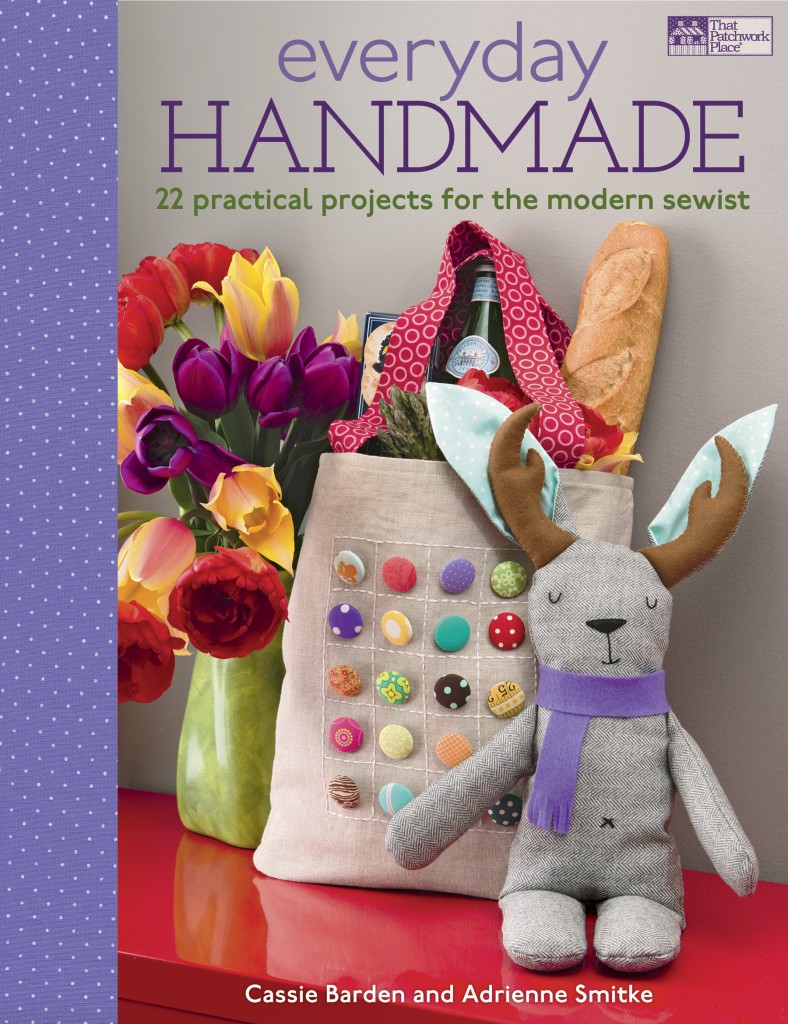
By Cassie Barden and Adrienne Smitke
We love any opportunity to explore working with new techniques and materials in our sewing projects. One of our favorite materials to work with right now is felt. Felt is fun and versatile, and can be combined with other fabric or used on its own. You don’t have to worry about frayed edges, and you can machine stitch or hand sew it, allowing for tons of project possibilities. In our book, Everyday Handmade: 22 Practical Projects for the Modern Sewist, we used felt for machine appliqué motifs, a hand-sewn pincushion and a beginner free-motion quilting project.
As sewing with felt gains popularity, you can find it in a huge range of colors–including some fun printed versions with patterns such as polka dots or stars. Most felt is made from wool, a wool-rayon blend or acrylic. Manufactured in different thicknesses, 1mm is the standard choice for most felt projects, but 2mm and thicker felts are available. Avoid the sheets of scratchy, thin “craft felt.” It’s the most widely available, but also the poorest quality. Our favorite is a wool-rayon blend from Japan (see “Shopping”). Gorgeous 100% wool felt is also a great choice, and is often available in one-of-a-kind hand-dyed colors.
Adrienne’s Tips for Working With Felt:
In case you’ve never worked with felt, here’s some tips and techniques from Adrienne to get you started:
Design Transfer
For pattern templates:
1. After developing your templates, trace the reversed template on the paper side of a piece of freezer paper.

2. Cut out the pattern leaving approximately a 1/4” extra outside the drawn line. With medium heat press your cut-out freezer paper pattern to the wrong side of your felt.
3. Cut out your template on the drawn line referring to the additional cutting tips below. Peel off the remaining freezer paper.
For quilting patterns:
1. Trace your pattern on to stabilizer and pin it to the front of your felt pattern piece.
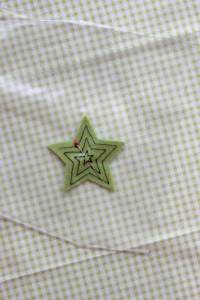
2. Stitch on the marked lines through both the stabilizer and the felt. When you’re finished, tear away the stabilizer.
Cutting
For cutting basic square and rectangle shapes, use a rotary cutter and acrylic ruler, just as you would for cutting quilting cottons. However, be aware that cutting felt will dull your rotary blade faster so change it frequently. For accuracy when cutting out detailed felt shapes, use very sharp scissors with a small pointed tip.
Stitching
You can machine topstitch and appliqué felt just as you would fabric, though you may need to adjust your stitch length and tension. Always test on scraps first. Pin the pieces in place before sewing, or use a small swipe of a glue stick to help keep very tiny pieces from moving while you sew.
Free-motion stitching on felt is a fun, low-commitment way to play with the technique. As in any instance with free-motion stitching, a darning foot is helpful, though not required.
1. Transfer the stitching design to the stabilizer and pin it to the front felt piece.
2. Thread your machine with a top thread that contrasts with the felt color and a bobbin thread that matches the felt. Lower the feed dogs. Test the thread tension with felt scraps before beginning. Free-motion stitch along the lines, taking two or three tiny stitches at the beginning and end of each line to secure the thread.
3. Remove the stabilizer and snip the loose threads.
Shopping
A simple keyword search on etsy.com will yield tons of results for the various varieties of felt listed above, but here are a few of our favorites to get you started:
Lit’l Brown Bird
Sun Felt Japanese brand felt
Filz Felt
100% German wool felt
I LOVE felt 88
Felt fabrics and printed felts

Woodland Sewing Set from Everyday Handmade. This sewing set features a hand sewn felt hedgehog pincushion and an easy tree stump needle book.
One of our favorite projects in our book is the Woodland Sewing Set, because we collaborated on the concept and design of the projects. For the set, Cassie developed an adorable Tree Stump needle book that incorporates basic felt techniques and an easy introduction to free-motion stitching.
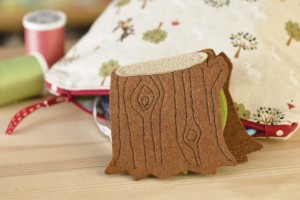
Needle books are a great way to keep track of an assortment of pins and needles, whether you’re sewing at home or on the go. Pin your sharps to the pliable pages inside and you’ll always have what you need on hand. Because needle books are a quick and easy project, they make a great canvas for personalizing with your own motifs or for playing with a new technique. As a special treat for you, Cassie designed an alternate needle book pattern for the set. Stop back here on Tuesday, December 13 to get Cassie’s pattern and participate in a new challenge where you can show off your own needle book design, using Cassie’s as inspiration. There’s a prize, so get your thinking caps (felt ones, of course) on!
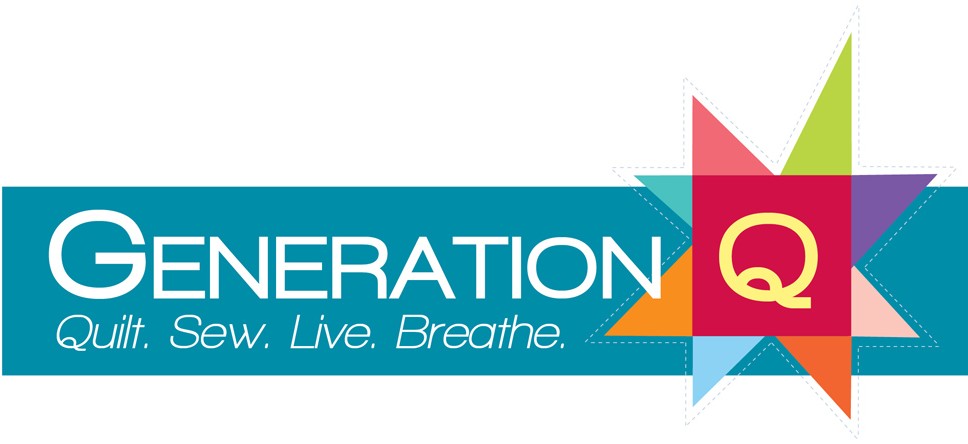

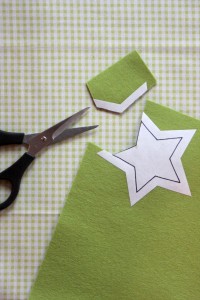
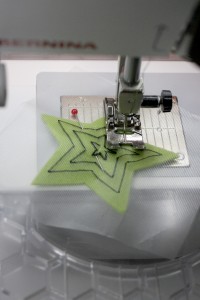
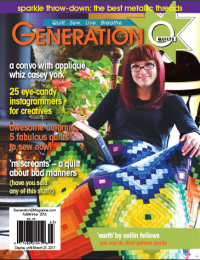
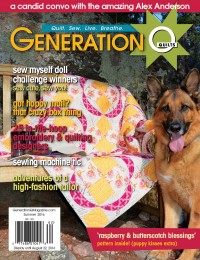

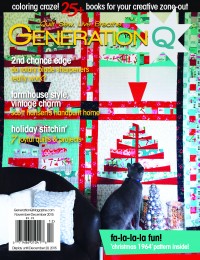
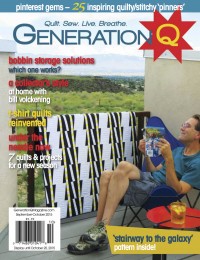
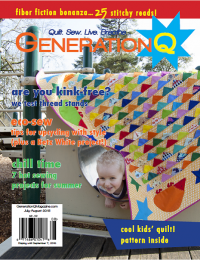
COMMENT #1
that tree stump needle book is completely adorable!
COMMENT #2
Aww, that woodland set is so cute!
COMMENT #3
I LOVE felt! I only buy white felt, then I color it with Lindy’s Stamp Gang starburst stains. It makes the felt a little more stiff, but it also adds any color I want, as well as a beautiful glitter too! (That doesn’t rub off!) Great post, thanks for the info, and I love stars too! 😉
COMMENT #4
I am just starting to us felt for a project. Unfortunately for this project sewing won’t be an option. Can you recommend an adhesive that will work well on felt? I have heard about paper backed adhesive but it would be too expensive for my project. (I am making a bunny project as a fund raiser for a Rabbit Rescue). Fabric glue and a glue stick have been mentioned on other sites – what do you think of them?
I appreciate any help you can offer.
Thanks,
Lori Mancuso
COMMENT #
Lori, I showed your question to Adrienne Smitke and this is what she had to say: “Since I don’t know what she’s fusing the felt to (Fabric? More felt? Paper?) I’m not exactly sure how to answer her question. Also, I’m not sure if she means fusible web when she refers to paper backed adhesive, as that would be my first recommendation. It’s quite cheap – usually $2 – $4 per yard where I buy it, depending on the brand. I would not recommend using a glue stick on a porous material like felt, as I don’t think it would create a lasting bond. While not a fabric glue, my go-to craft glue is Aleene’s, because it’s non-toxic, but again, since I don’t know what she’s gluing the felt to, I can’t vouch for how well it will work. I have heard that Aleene’s also makes a specific fabric glue (though I haven’t yet tried it myself), so it might be worth hunting that down. If she can visit a general craft store like JoAnn’s they may be able to help her figure out the best fabric glue for her specific project.”
Hope that helps!
COMMENT #5
thank you.
COMMENT #6
ESTA MUY INTERESANTE.GRACIAS Y LINDO TODO
COMMENT #7
What about washing felt? Will the colors bleed? What will happen to the felt if it gets washed? Thanks, Judi
COMMENT #8
Judi: It depends on what the felt is made of toward what will happen when washed. The felt should be colorfast. In addition, why would you want to wash the felt? Thank you. GiGi